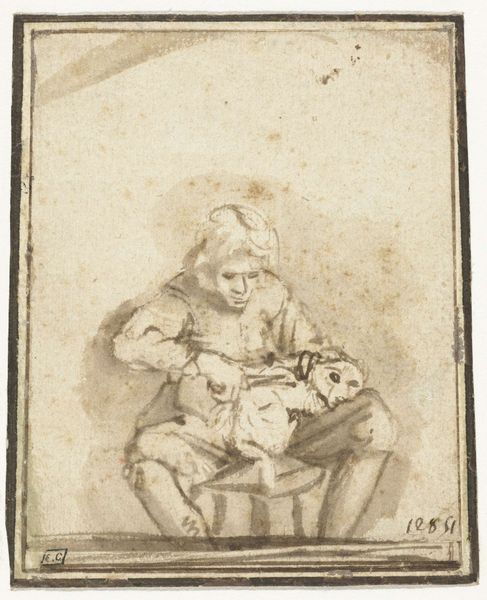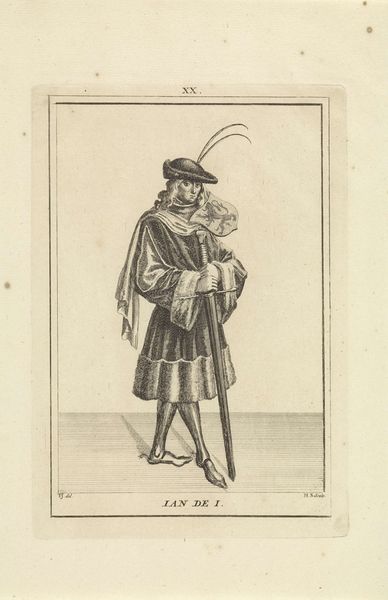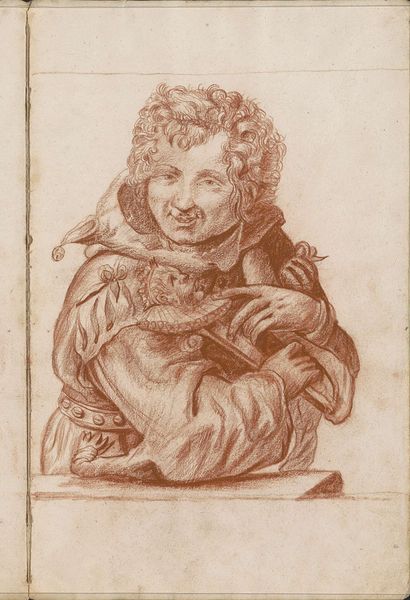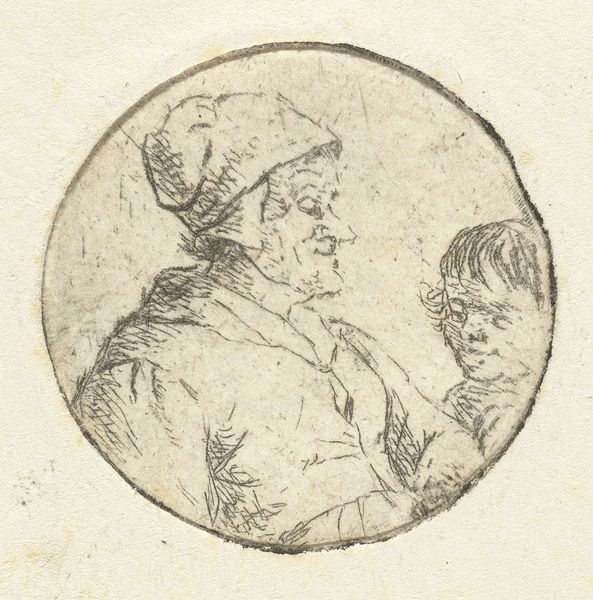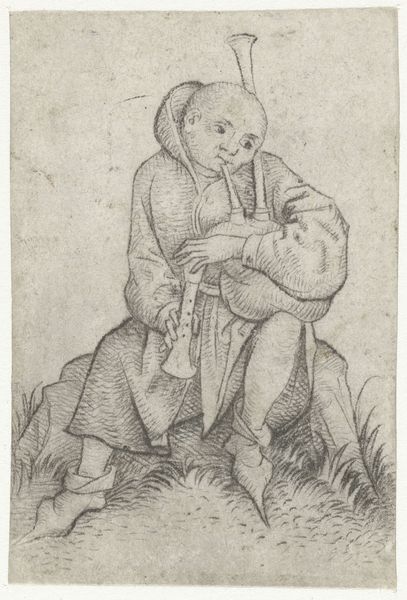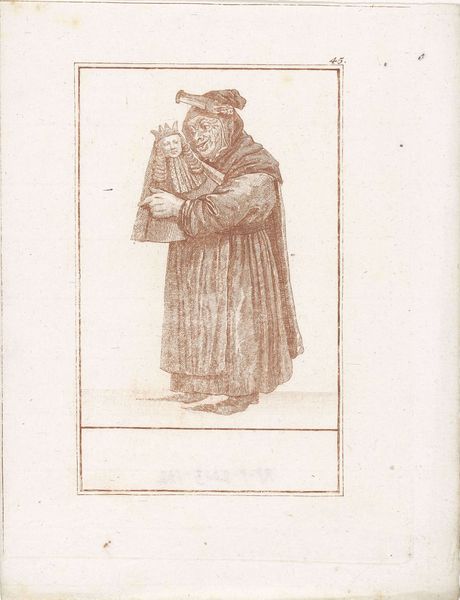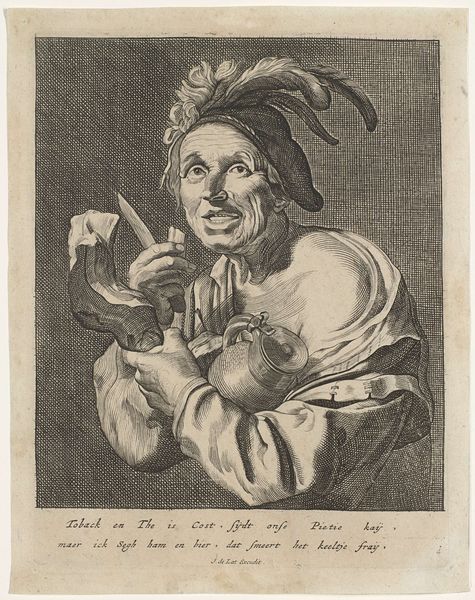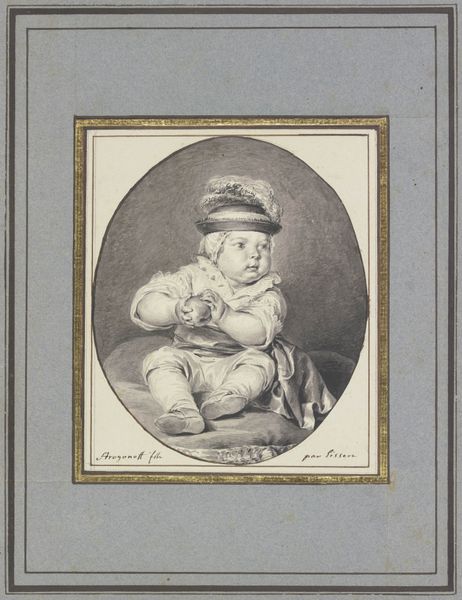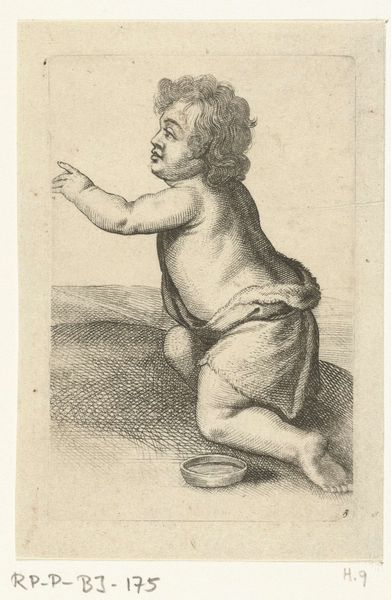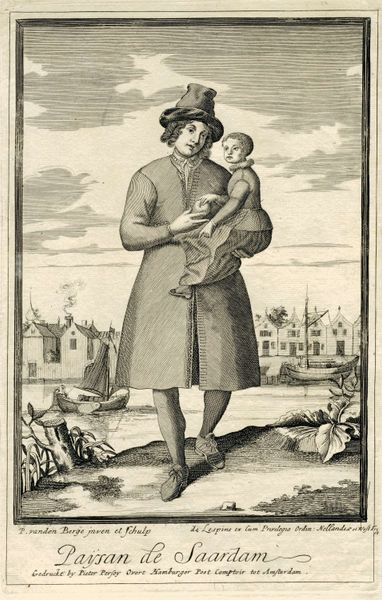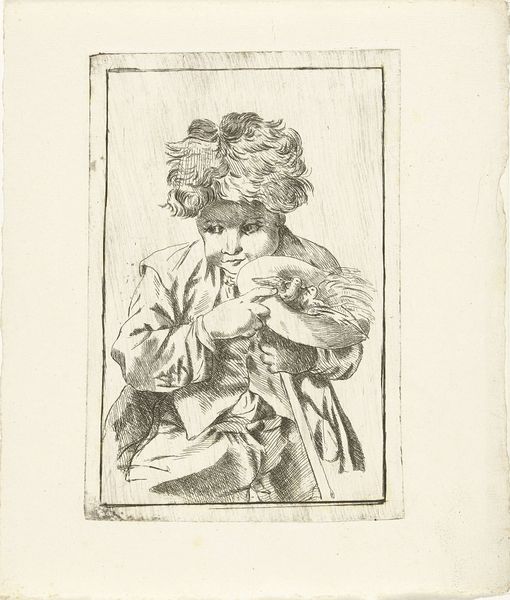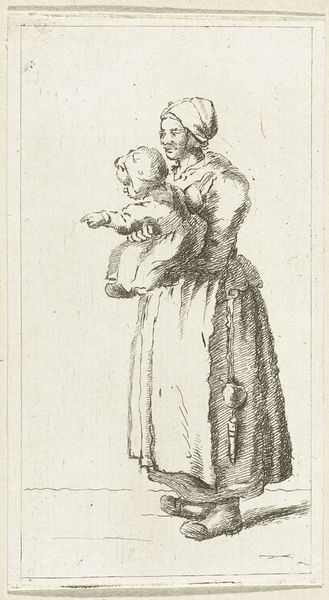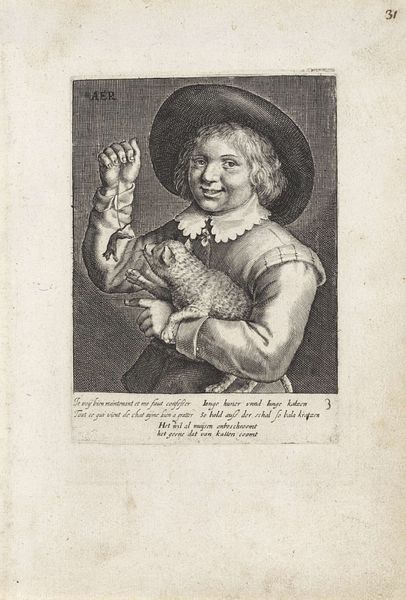
drawing, coloured-pencil, paper, watercolor
#
portrait
#
drawing
#
coloured-pencil
#
narrative-art
#
baroque
#
dutch-golden-age
#
figuration
#
paper
#
watercolor
#
coloured pencil
#
watercolour illustration
#
genre-painting
#
watercolor
Copyright: Rijks Museum: Open Domain
Curator: Before us, we have Hendrick van Beaumont's "Boy with Cat", a genre scene created around 1696 using colored pencil and watercolor on paper. It’s a fascinating snapshot of daily life from the Dutch Golden Age. Editor: You know, the first thing that jumps out is the muted palette. It's all greys and browns, but then this little flash of reddish-orange from the cat. Like a tiny rebellious flame in a very well-behaved world. Curator: Absolutely. Beaumont was working within a period deeply influenced by Baroque aesthetics. Yet, his artistic choices present a distinct approach. Notice how this work exemplifies the era's interest in figuration and portraiture. Editor: It also feels… unfinished, or maybe 'sketchy' is the word. Look at the edges around the boy. Almost like a memory emerging from the blankness. Does that make sense? Curator: It does. And that incompleteness reveals the creative process more openly. Such works shed light on shifts in patronage where art functioned less for solely the Church and Monarch, and more for public consumption by wealthy merchants. Pieces such as this one offer some sense of how cultural and societal shifts shaped what was collected. Editor: Right. I get a sense of the changing relationship between children and animals too. This isn’t just some regal portrait. This is like a glimpse of daily mischief and tender cruelty all swirled together in one frame. Is he really hurting the poor creature? Curator: We could discuss how, for one thing, animals slowly began transitioning from utilitarian roles toward pets, signaling significant changes in family structure, ethical concerns, and socio-economic status. That tail he is grabbing has been tugged more than once, no doubt. Editor: Ha! Well, the tug-of-war aspect is evident and I can imagine a similar dynamic with pets and their youngsters even today, which renders this piece timeless to a great degree. Curator: Exactly. By focusing on common scenes, Beaumont tapped into universal human interactions that transcend time, showcasing art’s vital function in depicting and analyzing our place in social narratives and frameworks. Editor: Yes, a scene rendered from paper, pigment, wit, and affection all in perfect alignment. Curator: Indeed, It is this melding of period and technique that helps it retain so much depth and allows it to stay relevant.
Comments
No comments
Be the first to comment and join the conversation on the ultimate creative platform.
